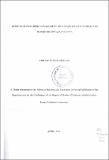| dc.description.abstract | The operations of mission hospitals in Kenya and the rest of Sub-Saharan Africa are all alike. The drivers of debt risk management and sustainability have been worrying in that rnany are closing down every day. Measures to save them are taken different1y every day by major stakeholders. The church particularly is really concerned about the performance of their own institutions. The objective of this study was to find out the factors influencing debt risk management and sustainability of selected mission hospitals in Kenya. 48 mission hospitals were targeted for this study all in Kenya. The total population studied by the virtue that they all bad similar attributes. The descriptive study collected data from 48 selected hospitals coupled with other collection methods to provide a thorough examination of the research objectives Questionnaires were used to collect information required as the data collection tools. Data was be processed and tabulated in form of tables and graphs. The major findings of the study are that the major determinants of debt risk and sustainability of selected mission hospitals are top management oversight, cost of capital, level of diversification and clientele. A total of 42 hospitals out of 48 were studied. Person coefficient indicated a positive correlation of top management oversight, cost of capital, diversification and clientele. Which were all found to positively influence drivers of debt risk on sustainability of mission hospitals in• Kenya. The four are really recommended to be thoroughly investigated to see how best mission hospitals can e managed sustainably in Kenya and beyond. The heads of these institutions need to have more tangible options when managing the hospitals as wen as the boards of governors. Finally the lobby that can be done by the church can be highly recommended for growth of these mission hospitals. Mission hospitals all have similar directions which either follow structures which they have laid forward or at the same time others fail to. The matters discussed in this investigation showed how the structures can be strategically laid out to create some competitive advantage. In the very past, it was not the business of mission hospitals worrying about whether they breakeven or fail to. Much of the earnings have been going to pay off debts. This has created a situation nowadays which is worrying in their operational plans since all expenses me met out of the revenues collected. No more donor funds have been forthcoming to aid the running of mission hospitals. | en_US |

